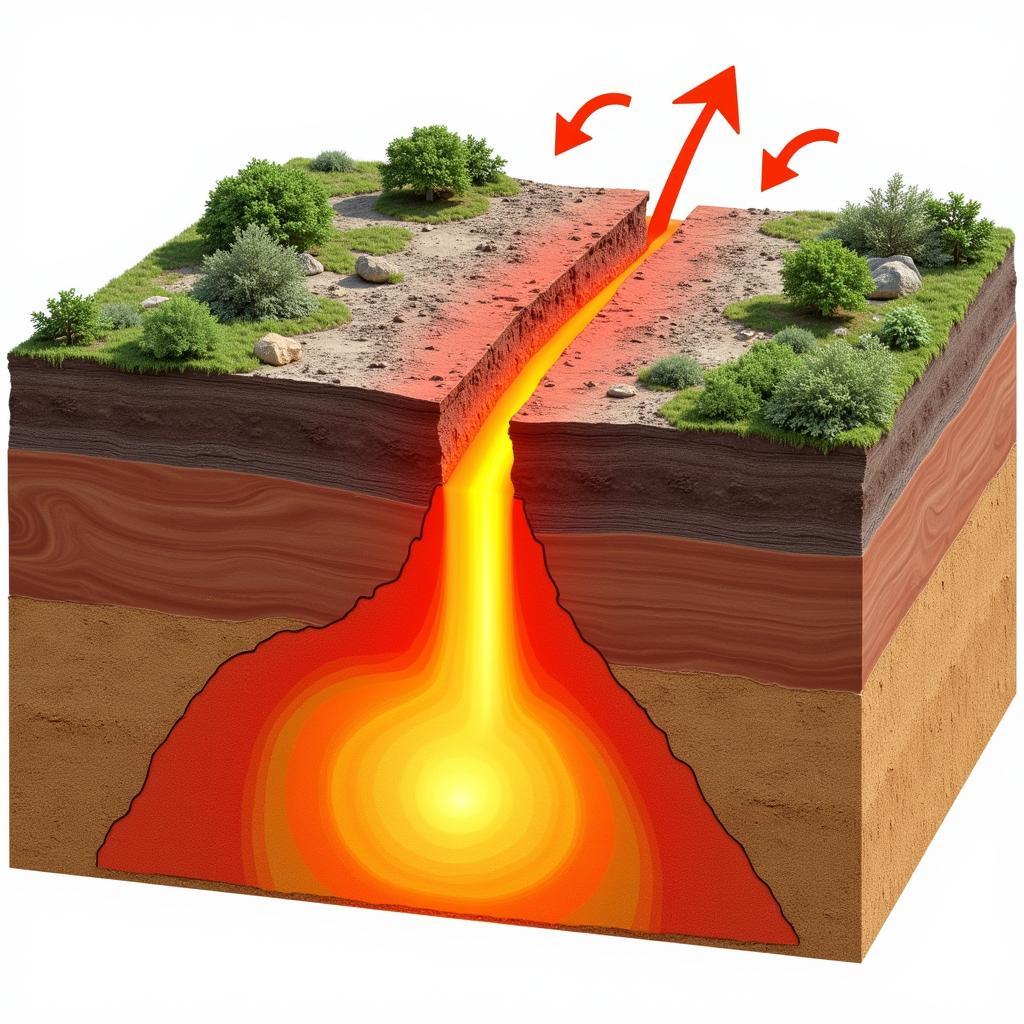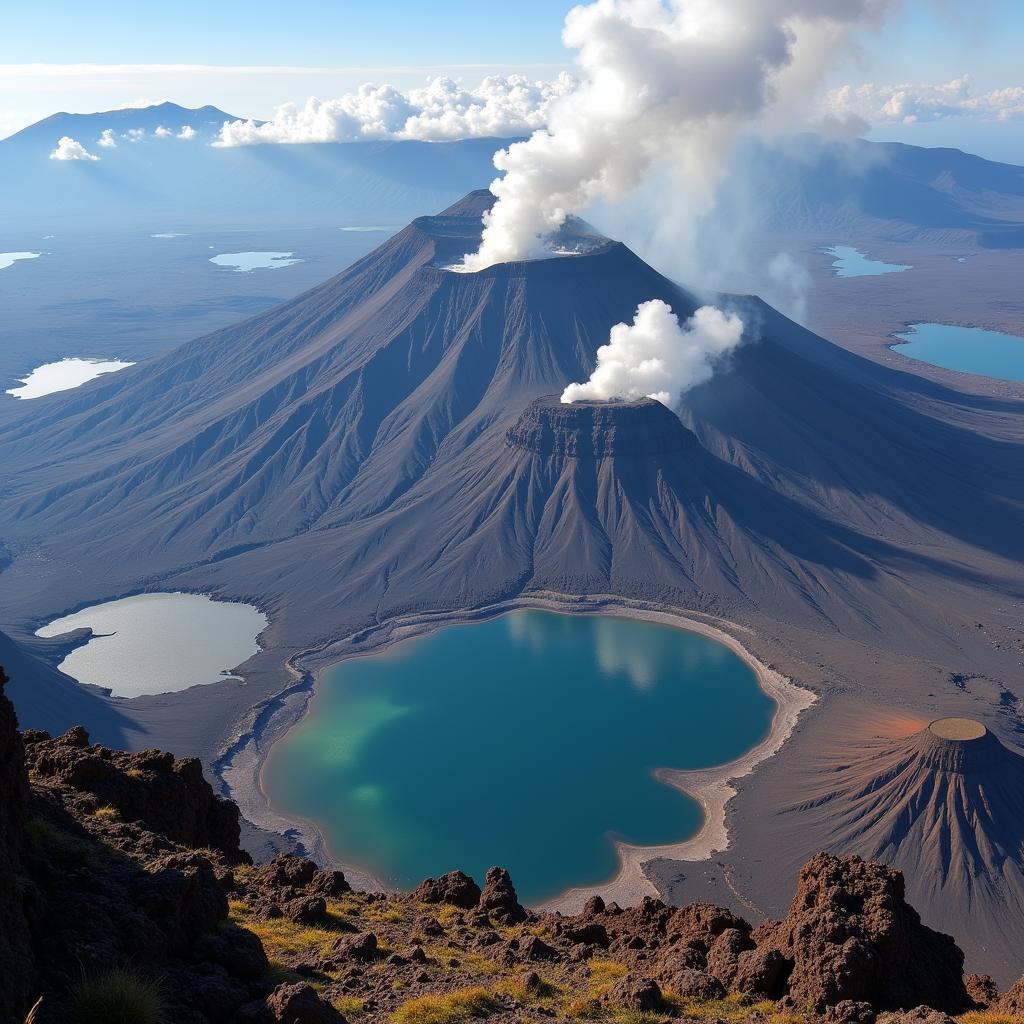East African Rift Valley: A Comprehensive Guide for UPSC Aspirants
The East African Rift Valley (EARV) is a geological wonder spanning thousands of kilometers across eastern Africa, a significant topic for UPSC aspirants. This active rift system, a testament to the Earth’s dynamic forces, is not only geographically significant but also plays a crucial role in understanding the continent’s biodiversity, climate, and even human evolution. This guide dives deep into the EARV’s formation, features, and importance, providing a holistic view for those preparing for the UPSC examination.
Formation and Geological Processes of the East African Rift Valley
The EARV’s formation is a complex process driven by plate tectonics. It’s a result of the African plate splitting apart, creating a divergent plate boundary. This separation is caused by the upwelling of magma from the mantle, thinning and stretching the lithosphere. This process, ongoing for millions of years, has resulted in the characteristic valley, flanked by volcanoes and dotted with lakes. The rifting process is far from over, and the EARV continues to evolve, shaping the landscape and creating new geological features.
The rifting process has also created a series of horsts and grabens, giving the valley its unique topography. The shoulders of the rift are uplifted, forming highlands, while the central part has subsided, creating the valley floor. This constant interplay of tectonic forces makes the EARV a dynamic and ever-changing environment.
 East African Rift Valley Tectonic Plate Movement
East African Rift Valley Tectonic Plate Movement
Biodiversity Hotspot: Flora and Fauna of the EARV
The diverse habitats within the EARV support a rich array of plant and animal life. From the lush forests of the highlands to the arid savannas of the valley floor, the region boasts a remarkable biodiversity. This variety is a direct result of the unique geological and climatic conditions prevalent in the rift valley.
The EARV is home to numerous endemic species, including various birds, mammals, and reptiles. The rift valley lakes, like Lake Tanganyika and Lake Malawi, are particularly rich in aquatic life, supporting a high degree of endemism among fish species. The varying altitudes and microclimates further contribute to the biodiversity, creating isolated habitats that foster the evolution of unique species.
The Human Element: EARV and Human Evolution
The EARV is considered the cradle of humankind, playing a significant role in human evolution. Fossil discoveries within the rift valley, particularly in areas like Olduvai Gorge and Koobi Fora, have provided invaluable insights into our ancestral lineage. The unique geological conditions of the EARV, such as volcanic activity and sedimentation, have created favorable conditions for fossil preservation.
The rift valley’s environment has also influenced the development of early human societies. The availability of resources, like water and food, along with the diverse landscapes, likely shaped the migratory patterns and cultural practices of early hominins. The EARV continues to be a vital area for archaeological research, offering crucial clues about our evolutionary past.
What are the Key Features of the East African Rift Valley?
The key features of the East African Rift Valley include volcanic activity, prominent escarpments, deep lakes, and a diverse range of landscapes, from savannas to highlands.
 East African Rift Valley Volcanic Activity and Lakes
East African Rift Valley Volcanic Activity and Lakes
Why is the East African Rift Valley important for UPSC studies?
The EARV is important for UPSC studies due to its geographical significance, its role in biodiversity, its connection to human evolution, and its impact on the region’s climate and resources.
Conclusion
The East African Rift Valley stands as a testament to the dynamic forces shaping our planet. Its geological significance, coupled with its rich biodiversity and role in human evolution, makes it a crucial area of study for UPSC aspirants. Understanding the EARV’s complexities provides a deeper appreciation of Earth’s history, the evolution of life, and the ongoing geological processes that continue to shape our world. Remember, the EARV is more than just a geographical feature; it’s a living laboratory where past, present, and future intertwine.
Frequently Asked Questions (FAQ)
- What causes the East African Rift Valley to form? The EARV is formed by the divergence of tectonic plates, driven by the upwelling of magma from the mantle.
- Why is the EARV considered a biodiversity hotspot? The varied habitats and microclimates within the EARV support a wide range of plant and animal life, including many endemic species.
- What is the significance of the EARV in human evolution? Fossil discoveries in the EARV have provided crucial insights into human ancestry and the development of early human societies.
- What are some of the key geological features of the EARV? Volcanoes, escarpments, deep lakes, and diverse landscapes are characteristic features of the EARV.
- Why is studying the EARV important for UPSC exams? The EARV is geographically significant, plays a role in biodiversity, is connected to human evolution, and impacts the region’s climate and resources, making it a relevant topic for the UPSC exam.
- How does the EARV influence the climate of the region? The varied topography of the EARV creates diverse microclimates, impacting rainfall patterns and temperatures across the region.
- What are the economic implications of the EARV’s resources? The EARV possesses valuable mineral resources and geothermal potential, offering significant economic opportunities for the region.
For any assistance, please contact us at Phone Number: +255768904061, Email: kaka.mag@gmail.com or visit our address: Mbarali DC Mawindi, Kangaga, Tanzania. We have a 24/7 customer service team.


